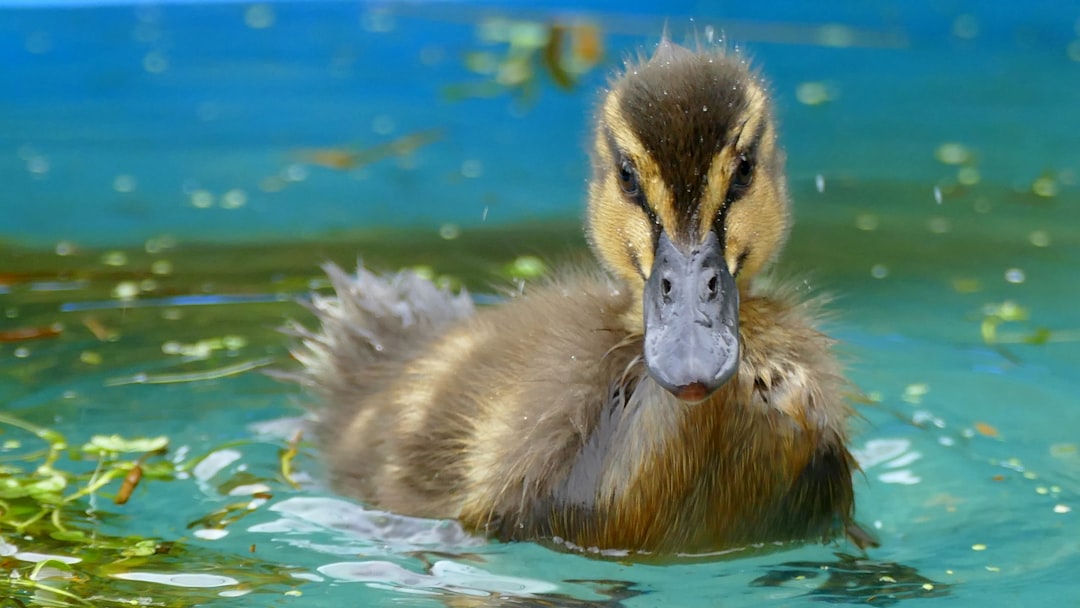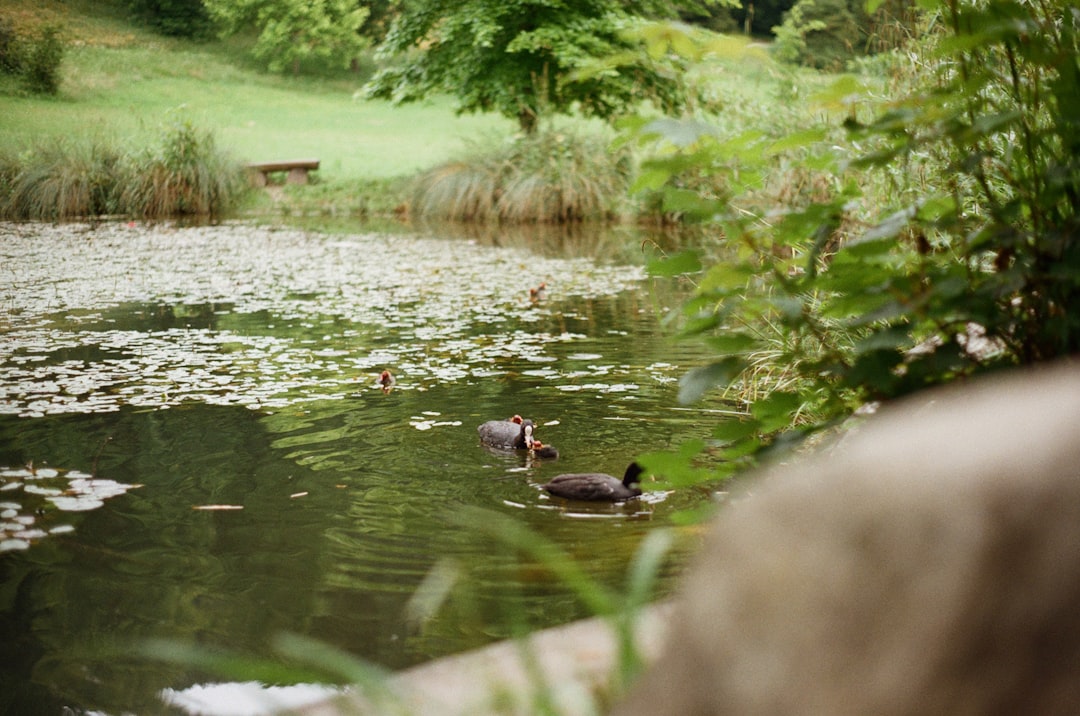If you are an avid duck hunter, you may want to consider creating a duck pond on your property. A duck pond can attract ducks to your hunting area and provide a natural habitat for them to thrive.
However, building a duck pond requires careful planning and execution to ensure a successful outcome. In this article, we will discuss the steps you need to take to create a duck pond for hunting.
Whether you are a seasoned duck hunter or just starting out, this guide will provide you with the information you need to build a duck pond that will attract ducks and enhance your hunting experience.
So, How To Make A Duck Pond For Hunting? To make a duck pond for hunting, there are several key steps you need to follow. First, choose a suitable location for your pond that has access to water and provides a natural habitat for ducks.
Next, excavate the area to create the pond and ensure proper drainage. Install a liner to prevent water leakage and add rocks or other natural features to enhance the pond’s appearance.
Finally, plant vegetation around the pond to attract ducks and provide cover for them.
Creating Duck Hunting Habitat: (How Much does it Cost?)
The cost of creating a duck pond for hunting depends on various factors, such as the size of the pond, materials used, and labor costs. On average, building a small to medium-sized duck pond can cost anywhere from $500 to $5,000 or more.
However, it is important to keep in mind that the benefits of having a duck pond for hunting far outweigh the initial costs.
A well-designed and maintained duck pond can attract ducks to your property year-round, providing you with ample opportunities for successful hunting trips.
Additionally, a healthy duck population can benefit the local ecosystem by promoting biodiversity and improving water quality.
When Planning Your Pond – Consider Having an Island
When planning your pond, consider having an island in the center. This will provide a safe haven for ducks to rest and roost away from predators. You can also add a feeding station on the island to attract more ducks to your pond.
When choosing vegetation, opt for native species that are adapted to your region’s climate and soil conditions. This will ensure that they thrive and continue to attract ducks over time.
Maintenance is key to keeping your duck pond healthy and attractive to ducks.
Regularly check the water quality and remove any debris or dead vegetation from the pond.
Choosing the Right Location

When choosing the location for your duck pond, it is important to consider factors such as access to water and natural habitat for ducks. Look for areas near natural water sources such as streams or wetlands.
Avoid areas that are prone to flooding or have poor drainage, as this can lead to problems with the pond’s structure and water quality.
Additionally, consider the surrounding environment. Ducks prefer areas with vegetation and cover, so choose a location that has native plants and trees nearby. This will provide additional food sources and shelter for the ducks.
By carefully selecting the location of your duck pond and following proper construction and maintenance techniques, you can create a thriving habitat for ducks that will enhance your hunting experience.
Look for A Site with Natural Water Sources
Consider a location that is not too close to residential areas, as the noise and activity of hunting may disturb neighbors.
Before starting any construction, be sure to obtain all necessary permits and approvals from local authorities.
Consider Wind Direction and Sun Exposure
When planning your duck pond for hunting, it is also important to consider wind direction and sun exposure. Ducks prefer calm waters, so choose a location that is shielded from strong winds.
Additionally, ensure that the pond receives a mix of sunlight and shade throughout the day to promote healthy plant growth and provide comfortable resting areas for ducks.
Check for Any Legal Requirements or Permits Needed
Before starting any construction on your duck pond, it is important to check for any legal requirements or permits needed.
This may include obtaining permits for water use, land use, or environmental impact assessments. Consulting with local authorities can help ensure that your duck pond meets all necessary regulations and does not harm the local ecosystem.
Designing the Pond

When designing your duck pond, consider the depth of the pond. A depth of 18-24 inches is ideal for ducks to feed and swim comfortably. To prevent erosion and maintain proper water quality, consider lining the pond with clay or other materials.
You can also add features such as a waterfall or stream to promote water circulation and provide additional habitat for ducks.
Determine the Size and Shape of The Pond
When determining the size and shape of your duck pond, consider the number of ducks you want to attract and the available space on your property.
A pond that is too small or too large can negatively impact the pond’s ecosystem and may not attract as many ducks as desired.
Choose the Appropriate Depth for The Pond
When choosing the depth of your duck pond, keep in mind that ducks need shallow water to feed and dive for food.
If the pond is too deep, they may not be able to reach the bottom. However, you should also ensure that the water is deep enough to prevent the pond from drying out during periods of drought.
Plan the Layout of Any Artificial Structures, Such as Blinds or Decoys
When planning the layout of any artificial structures, such as blinds or decoys, consider the natural habitat and behavior of ducks.
For example, ducks tend to prefer the edges of ponds and areas with vegetation for cover. Place blinds in strategic locations that provide a clear view of incoming ducks while also being well-concealed.
Building the Pond
Building the pond requires careful planning and construction techniques. Start by digging the pond to the desired depth and shape, ensuring that it has a gradual slope for easy access by ducks.

Next, line the pond with clay or other materials to prevent erosion and promote water retention. Be sure to add any additional features, such as a waterfall or stream, during construction.
Clear the Area and Excavate the Pond
Clear the area and excavate the pond to the desired size and shape. It’s important to ensure that the pond has a gradual slope for easy access by ducks and is deep enough to prevent it from drying out during periods of drought.
Once you have excavated the pond, you can line it with clay or other materials to prevent erosion and promote water retention.
Install Any Necessary Drainage or Irrigation Systems
If your duck pond is located in an area prone to flooding, it may be necessary to install drainage or irrigation systems to regulate the water level.
Consult with a professional landscaper or engineer to determine the best solution for your needs.
Once you have completed construction and maintenance of your duck pond, it’s time to enjoy the benefits of your hard work.
Line the Pond with Appropriate Materials, Such as Clay or Plastic
After excavating the pond, it is important to line it with appropriate materials to prevent erosion and promote water retention.
Clay or plastic are both effective options for lining the pond. Once you have lined the pond, it’s time to start adding vegetation around the edges to attract ducks and provide cover.
Native plants that are well-suited to your climate and soil type are the best option.
Maintaining the Pond

Regularly monitor water levels and quality
To ensure that the pond remains a healthy and thriving habitat for ducks. Remove any debris or invasive plants that may harm the ecosystem and clean any artificial structures regularly.
It’s also important to address any issues promptly to prevent them from becoming larger problems.
Control Vegetation Growth and Remove Any Debris
Regularly controlling the growth of vegetation around the pond is crucial to maintaining a healthy ecosystem.
Overgrown vegetation can deplete oxygen levels in the water and create stagnant areas that are unsuitable for ducks.
Additionally, removing any debris or trash from the pond will help prevent contamination and maintain a clean environment.
Consider Adding Supplemental Food Sources for The Ducks
Consider adding supplemental food sources for the ducks, such as corn or wheat. This will not only attract more ducks to your pond but also provide them with the necessary nutrients they need to thrive.
However, be cautious not to overfeed them as excess food can lead to water contamination and harm the ecosystem.
The Most Common Problems Landowners Experience With a Pond
1. Algae Overgrowth: Excessive algae growth is a common problem in ponds, and it can be caused by high nutrient levels, warm temperatures, and lack of oxygen.
2. Erosion: Erosion can cause damage to the pond’s banks and can lead to sediment buildup, which can decrease the pond’s depth and reduce its overall health.
3. Wildlife Management: Landowners often struggle with managing wildlife in and around their ponds, including invasive species, predators, and overpopulation.
4. Water Quality: Poor water quality can impact the health of the pond’s ecosystem, leading to problems like fish kills, reduced oxygen levels, and foul odors.
5. Maintenance: Proper pond maintenance is essential to prevent problems and keep your pond healthy. Landowners may struggle to keep up with regular cleaning, repairs, and other maintenance tasks.
Summary: How To Make A Duck Pond For Hunting?
Creating a duck pond for hunting can be a rewarding and fulfilling project. By following these steps to excavate, line, and add vegetation to your pond, you can create a thriving habitat for ducks while also enjoying the benefits of hunting.
However, it’s important to note that maintaining a healthy ecosystem requires regular monitoring and maintenance.
Common problems such as algae overgrowth, erosion, wildlife management, poor water quality, and maintenance can arise if proper care is not taken.
By being proactive in addressing these issues and consulting with professionals when needed, you can ensure that your duck pond remains a sustainable and thriving habitat for years to come.
FAQs
How Big Should My Duck Pond Be?
The size of your duck pond will depend on how many ducks you want to attract and the available space on your property. A minimum size of 50×50 feet is recommended.
Can I Use Natural Materials to Line My Pond Instead of Clay or Plastic?
Yes, natural materials such as bentonite clay or sand and gravel can also be used to line a duck pond.
What Kind of Supplemental Food Should I Provide for The Ducks?
Corn or wheat are common options for supplemental food, but it’s important not to overfeed them to prevent water contamination.
Do I Need a Permit to Create a Duck Pond on My Property?
Depending on the location and regulations in your area, you may need a permit from local authorities before building a duck pond.
Can I Put Fish in My Duck Pond?
It’s not recommended to put fish in a duck pond as they can disturb the ecosystem and compete with ducks for resources.




